

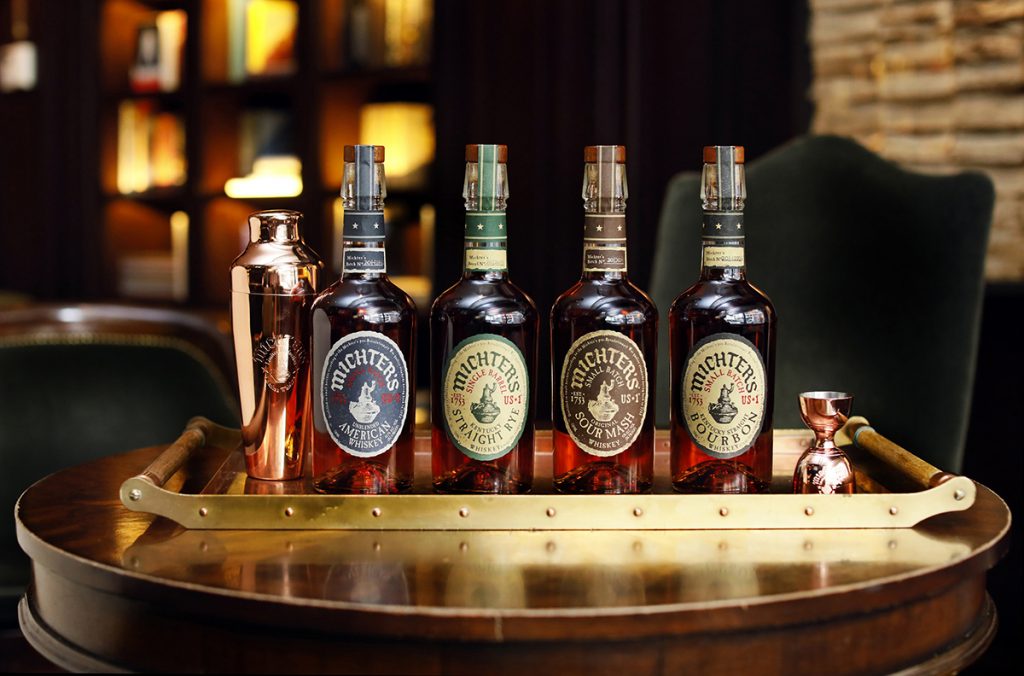
Michter’s has been making its mark for a while and we thought it was about time to peer behind the curtain at a brand that has risen to considerable heights.
A poll called the World’s Most Admired Whiskies, run by Drinks International, named American whiskey brand Michter’s first in 2023. The year before, it placed second overall (behind Springbank) and first for whiskeys from the States. An academy of bar owners, buyers, educators, writers, and other specialists in drink form this assessment, based on the quality and consistency of the range, the price-to-quality ratio, and the strength of branding and marketing.
It’s an indication of the regard Michter’s is held in the whiskey industry and demonstrates a remarkable rise. Bigger, older brands with greater financial muscle and marketing reach didn’t place as high. It’s also not a surprise. The year before it placed 4th and demand is so high that expansion has been rapid and limited editions sell out almost immediately. Take a look at our own site. We get Michter’s. Then it’s gone.
There’s little doubt Michter’s is making a mark. But is it really America’s most admired whiskey and, if so, what’s the secret? We tried the core range and spoke to master of maturation Andrea Wilson to find out.
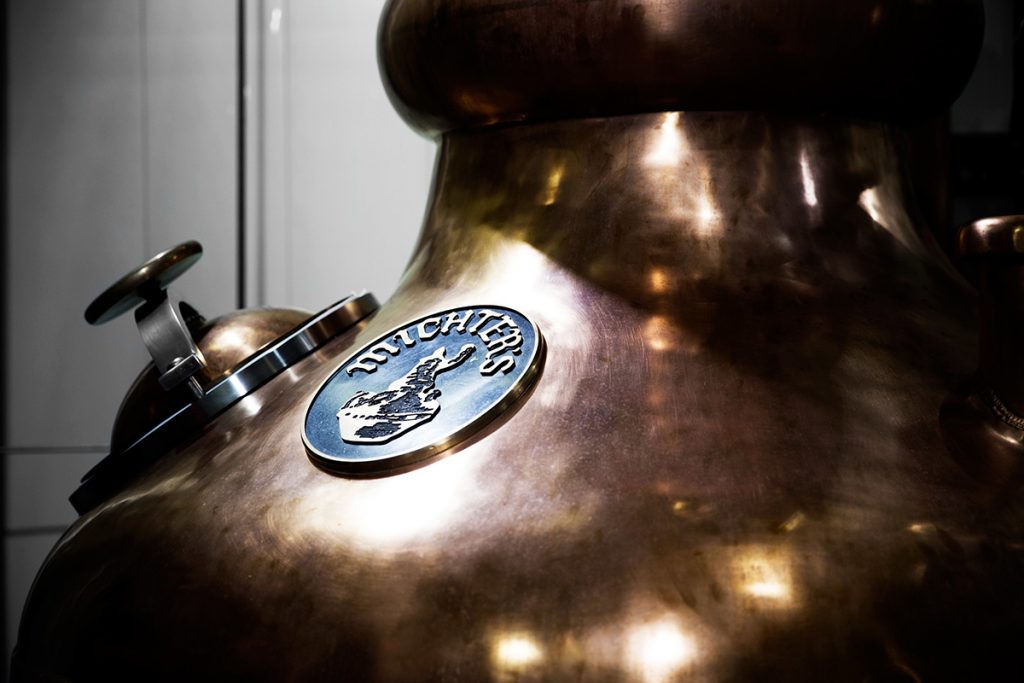
Michter’s makes whiskey in a way booze nerds like us can get geeky about
The whiskey certainly measures up, as you can read from my tasting notes below, but I want to know how they do it. First, some history: Michter’s is one of the oldest trademarks in American whiskey, with the first distillery founded in Schaefferstown, Pennsylvania in 1753 by John Shenk who made rye. The Michter’s of today is a brand revival, when the Magliocco family-owned Chatham Imports bought the trademark for $245 in the 1990s. Joseph J. Magliocco, the youngest of three brothers, enacted a three-step process to make American whiskey at a time when the industry was in a slump, beginning by moving operations to Kentucky from Pennsylvania on advice from his mentor Dick Newman of Old Taylor, Old Crow, Old Grand-Dad, and Wild Turkey fame.
Without the initial financial resources for a distillery, the second phase entailed acquiring barrels from Kentucky-based whiskey makers. There was already a style in mind for Michter’s, so it had specifications in place that required the sourced stock to match. Some have criticised Michter’s in the past for always presenting as a distillery even when it was buying whiskey in, but certainly as far as I can tell now the brand is very open about its process and how it built the company. It also could have just kept bottling sourced stock as it was so popular, but since 2015, the vast majority of Michter’s you’ll see is distillery made, with the odd limited-edition expression or blending component the exception.
Michter’s is now in stage three, distilling to the specifications it once sourced across several distilleries. There’s Shively Distillery and Fort Nelson Distillery (housed in a late 18th-century Louisville property), as well as a farm in Springfield, Kentucky growing 205 acres of estate-grown grains, some of which are already in use, and warehouses are being added here as part of an expansion that will see it become the main campus. Close to 100 employees work across the three, including Wilson and master distiller Dan McKee, recommended by master distiller emerita Pam Heilmann after she retired (having become the first female to take the role at a Kentucky Distillers Association distillery since Prohibition in 2016), and crucially is not an ambassador, but a true whiskey maker who is at the distillery every day working.
All whiskey begins with grain and Wilson outlines that there’s a tight focus on quality control from the moment it arrives at Michter’s, which only uses non-GMO grain that has been given the highest grade from the Department of Agriculture. Wilson describes Michter’s as being “nothing without our family farmers”, who provide corn from Kentucky and Indiana, rye from Minnesota, and barley from the Dakotas and Montana. Cage mills are employed to mill grains, a more passive system with two opposing wheels turning against each other at high speed, so when the grain falls into the hopper, it causes the grain to toss around and shear against itself. It’s an expensive method, but the benefits are less maintenance, no friction burn from metal which affects grain quality, and lots of control over speed. Consistency and quality are the goal, cost be damned. That’s a company motto. Those words are literally on the website.
Grain is brought into the cooker where no exogenous or chemical enzymes are used with a portion of the previous batch utilised via the sour mash process. Ten fermenters work 24/7 to meet demand before distillation takes place in Vendome Copper and Brass Works stills. This includes a column still with nineteen trays and a custom copper grid system at the top to influence the spirit with copper as much as possible. There’s also 250-gallon pot still doubler system with a good amount of reflux, while Fort Nelson Distillery has a pot still system from 1976, a 550-gallon beer still, and a 110-gallon spirits still originally from Michter’s Pennsylvania Distillery that adds a different dimension to the distilling program. The aim is to create a fruity, floral, grainy white dog that already demonstrates a lot of pronounced flavours due to how clean it is.
Maturation takes place in warehouses that are just four floors high with fourteen-inch concrete walls and an insulation layer that allows tracking and modification of temperature and humidity, which leads Wilson to believe that Michter’s can age its bourbon longer than most. The whiskey is bottled to taste and there are 25 people who sample it for quality control, leading to the ten-year products often having spirits that are well over age, while the core expressions get a long five to seven years in bourbon terms.
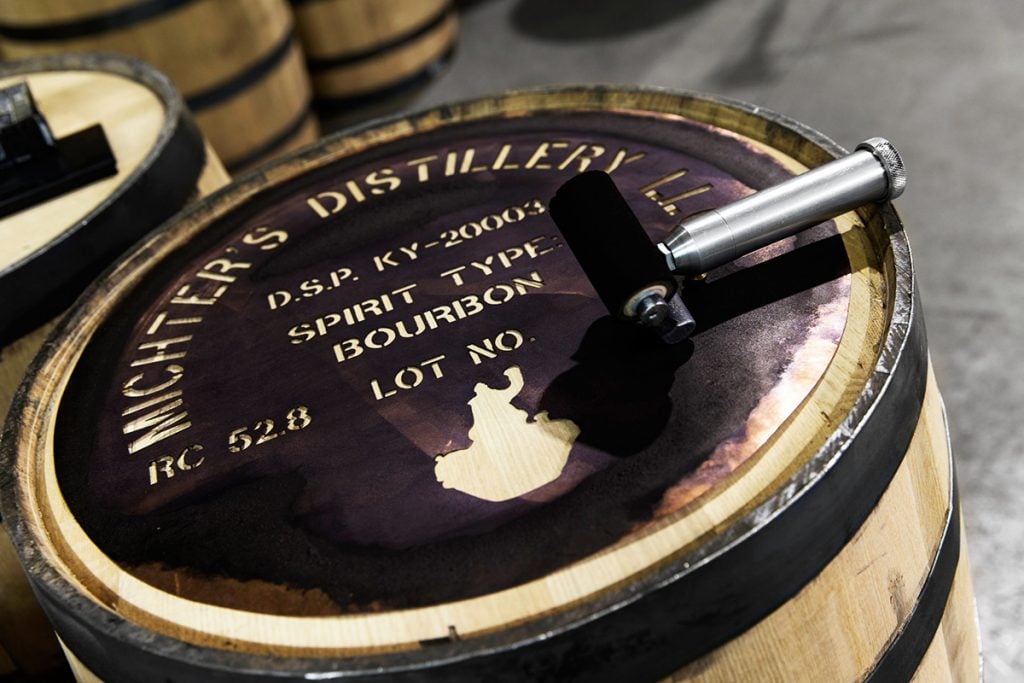
Every barrel is naturally air-dried, seasoned, and then toasted
While this is a thorough process, Wilson explains to me that after distillation, there’s a core process made up of six philosophies that really separates Michter’s. Some distilleries will do a selection of the below, or even none at all, but she can’t think of another that uses all of these techniques.
First, everything that Michter’s bottles are single barrel or small batch. Now, there’s no legal definition for the latter and it’s all relative. To Jack Daniel’s, 1000 barrels could be child’s play. At Michter’s, a tank creates 20 full barrels. That’s really small batch. Think about how hard it is to keep consistency and quality with that low volume. There’s nowhere to hide or any margin of error. One bad barrel is a hefty cost, but in a batch this size if it was used as a component it would be too noticeable. At this scale, precision is everything.
The second philosophy concerns the natural seasoning and air drying of all wood for at least 18 months, even up to five years. When you cut down an American white oak tree, over 60% of its weight is water. You need to extract that water so the wood can better interact with the whiskey. A kiln will dry it, but not the same as air drying and seasoning. By cutting the wood into stave lengths and sitting them in a stack precisely organised for air movement in an ageing yard, the wood is drying in the elements. It’s constantly chemically and biologically changing, growing fungi that release enzymes that metabolise different wood compounds and give way to beautiful aromatics. Bitter, astringent, tannic characteristics are being removed too.
Toasting before charring is philosophy number three. The law only dictates you char new American oak for bourbon. But toasting, an art imported from the wine industry, is a big flavour creator too. By making a little white oak fire to put the barrel over, you create radiant heat, one that’s heating the interior of the barrel. Different temperatures for different amounts of time will allow you to break down different compounds in the wood that you can then extract into your whiskey. Really high temperatures could get you mocha and chocolate and oaky and smoky compounds. Whereas lower temperatures mean more fruit and spice. It can take hours and you can only do half a barrel at one time. Charring, at its longest period, won’t take more than a minute and a half. Toasting is a long, committed, and not very cost-effective process. It’s also risky because there’s no good spending all that time if you remove all detectable effects when you char the barrel.
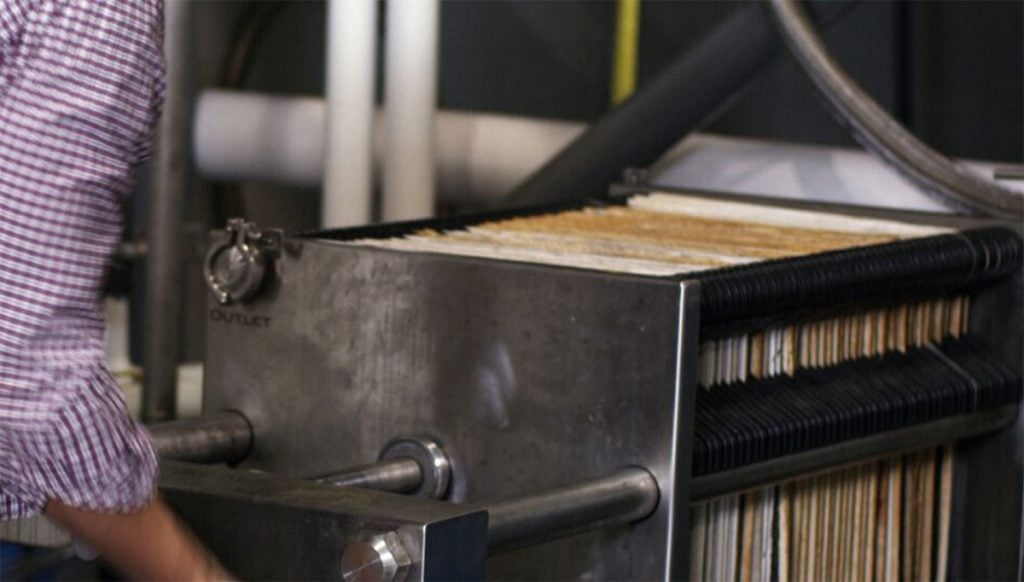
Chill-filtration like you’ve never seen
Number four is the use of a lower barrel entry: 51.5% ABV. You’re allowed up to 62.5% ABV in bourbon, but doing it the Michter’s way means that there’s a split of about 75% whiskey to 25% water in a barrel, which you might think dilutes it, but actually, this method utilises water’s properties as a powerful hydrolyser. “It becomes part of the barrel chemistry while ageing, in a way it can’t at bottling,” Wilson explains. It enables concentrated sugars in the toasted and charred wood to dissolve more into the distillate. This kind of ABV entry was historically regarded as the gold standard in Kentucky, but filling low costs more as you have to fill more barrels. It does mean adding less water at bottling though. The US*1 Bourbon, for example, needs over 50% less water at bottling than it would if it was aged at a higher proof.
Philosophy number five is heat cycling. Kentucky has hot humid summers and cold dry winters. Seasonal changes give you about six cycles a year, defined as the moment when the whiskey is moving into the capillaries of the wood or it’s moving back to the centre of the cask. During winter, the cask is more dormant so to increase interaction, Michter’s will heat the warehouses and then allow them to naturally cool down. As they are warmed, the vapour pressure in the barrel gets tight because it’s a volatile substance, pushing the whiskey into the capillaries of the wood where the caramelized red lines are, and as the whiskey cools down it slowly makes its way back to the centre of the cask. Wilson says this simple motion can have the effect of increasing the maturing quality by about six months, so a whiskey at six years old will present more like a nine-year-old whiskey. Again, it’s extremely costly because heat cycling significantly increases Angel’s share, but the richness it brings to the whisky is the reward.
The final stage is arguably the most interesting. If you ask most whiskey fans, they’ll tell you they don’t like chill filtration. Look at the reaction to our latest social post. Michter’s, however, has its own customised chill filtration process. There’s no typical carbon filtration or one-size-fits-all approach common at many distilleries. In this filtration system, multiple plates can be removed and added, filtering to select for flavour, with micron filters selecting which fats go into the whiskey. You simply adjust based on what you think is best suited to each individual whiskey. I’d love to see the pre-filtered whiskey to see what they’re selecting to filter. This is clearly not a commercial, cynical approach to chill filtration an, once again, it’s cost be damned. I also don’t know anybody else who does this.
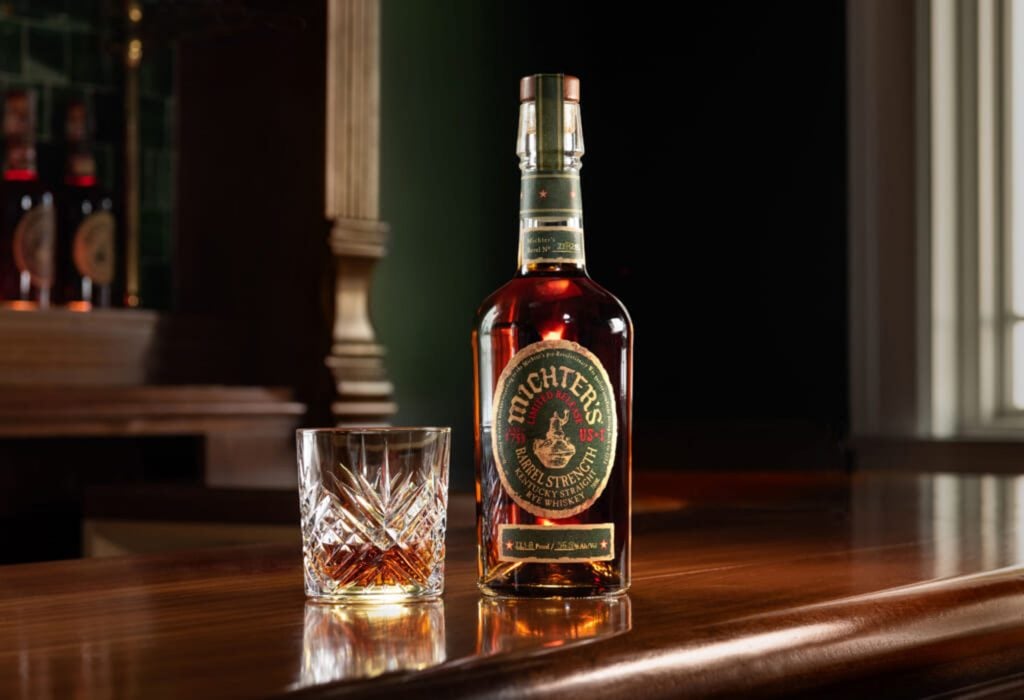
For goodness sake, try the rye
The truth is, awards and accolades are nice, but not the bread and butter for a good distillery. A story, no matter how old the trademark, will only get you so far. The whiskey has to stand up. So does the cost, and the core range has great bang for buck, for my money. But what really makes Michter’s stand out is the focus on each stage of production. It’s phenomenal. The detail, the innovation, and the commitment to making great spirit, cost and cynicism be damned, delights my inner booze nerd. There’s rye everywhere now and I can’t help but think that the best way to honour the legacy of Shenk is to be a major player in the rye revival, which this brand is. Overall, Michter’s has managed a smooth transition from sourced to in-house, taken a big name and added more weight to it, all by creating whiskey I’d be glad to see on any back bar. That’s certainly admirable.
Michter’s US*1 Bourbon
A classic American bourbon, with a warm toastiness that keeps the sweetness from being saccharine, lots of big chewy vanilla, as well as red cola cubes, dark chocolate, caramel, apricot, orange peel, and a hint of black tea astringency.
Michter’s US*1 Sour Mash Whiskey
The mash bill of this one has an even split of rye and corn (around 40/40) then a bunch of malted barley, so you can’t call it bourbon, or single malt. Hence Sour Mash. Despite the name, it’s sweet with crème brûlée, coffee cake, apples, and is also generously spiced.
Michter’s Straight US*1 Rye.
Some ryes can frazzle with all that chewy spiciness, but this one is remarkably measured, it washes you in waves of rye. The texture is oily and the flavours are varied. Should be sublime in Manhattan and is one of the better ryes I’ve had.
The post Why you need to try Michter’s Whiskey… appeared first on Master of Malt Blog.